Have you ever dreamed of having a stunning underwater world thrive right in your living room? Aquascaping can turn that dream into a reality! But before you dive headfirst into this amazing hobby, you’ll need to gear up with the right tools. In this post, we’ll break down the essential aquascape aquarium equipment and guide you through aquascape equipment setup all up.
Content Table
We’ll cover everything from lighting and filtration to substrate and CO2, giving you the knowledge to create a thriving underwater paradise.
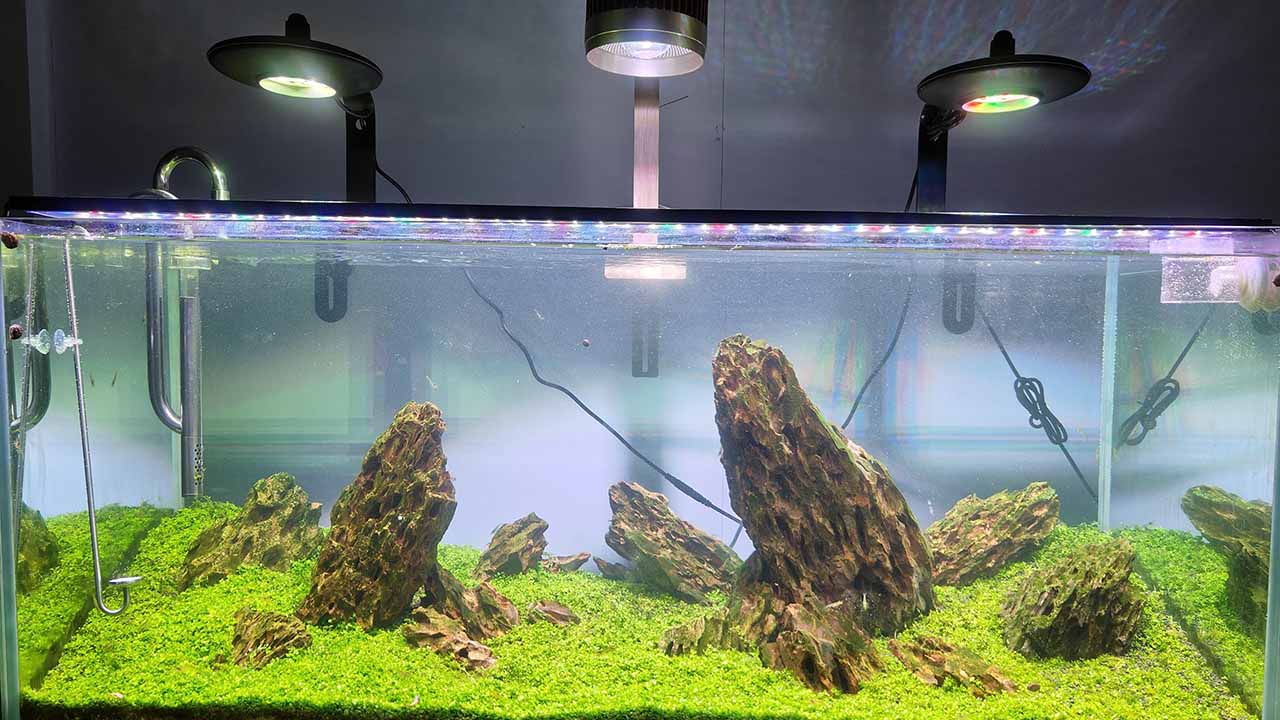
Aquascape Aquarium Equipment
The equipment you’ll need for an aquascape aquarium can be broken down into two main categories: the essentials and the trimmings. The essentials are essential to keep your underwater world healthy and thriving. The trimmings are the extras that can add a touch of personality and functionality to your aquascape.
Essential Equipment
- Aquarium: This is the foundation of your entire aquascape, so choose wisely! The size of the aquarium will depend on the type of aquascape you want to create and the fish you plan to keep.
- Stand: An aquarium stand is essential for safely supporting the weight of your full aquarium.
- Lighting: Light is essential for the growth of your plants. The type and intensity of light you need will depend on your chosen aquatic plants.
- Filtration: A good filtration system is vital for keeping your aquarium clean and healthy. The filter helps to remove waste from the water and keep it oxygenated.
- Substrate: The substrate is the layer of material that sits at the bottom of your aquarium. It provides a place for your plants to root and helps to buffer the water chemistry.
- Heater (optional): A heater may be necessary if you plan to keep fish that require warm water.
Four Major Core Equipment for Aquascape
1. Lighting
- Function
Aquarium lighting provides the necessary light energy for aquatic plants to grow and carry out photosynthesis. Plants utilize the light for food production and oxygen production. Light intensity and lighting waves play a crucial role in plant growth.
- Why it’s core:
Without proper lighting, aquatic plants will not be able to thrive. Improper lighting can lead to algae growth, stunted plant growth, and plant death.
- Light intensity
The correct light intensity will vary depending on the types of plants in your aquascape. Low-light plants will require less light than high-light plants. A good rule of thumb is to provide 0.5 to 1 watt of light per liter of water for low-light plants, and 1 to 2 watts of light per liter of water for high-light plants.
- Lighting wave
The lighting wave refers to the color spectrum of the light. Aquatic plants primarily use light in the blue and red spectrum for photosynthesis. Full-spectrum lights that provide a good balance of both blue and red light are ideal for aquascaped tanks.
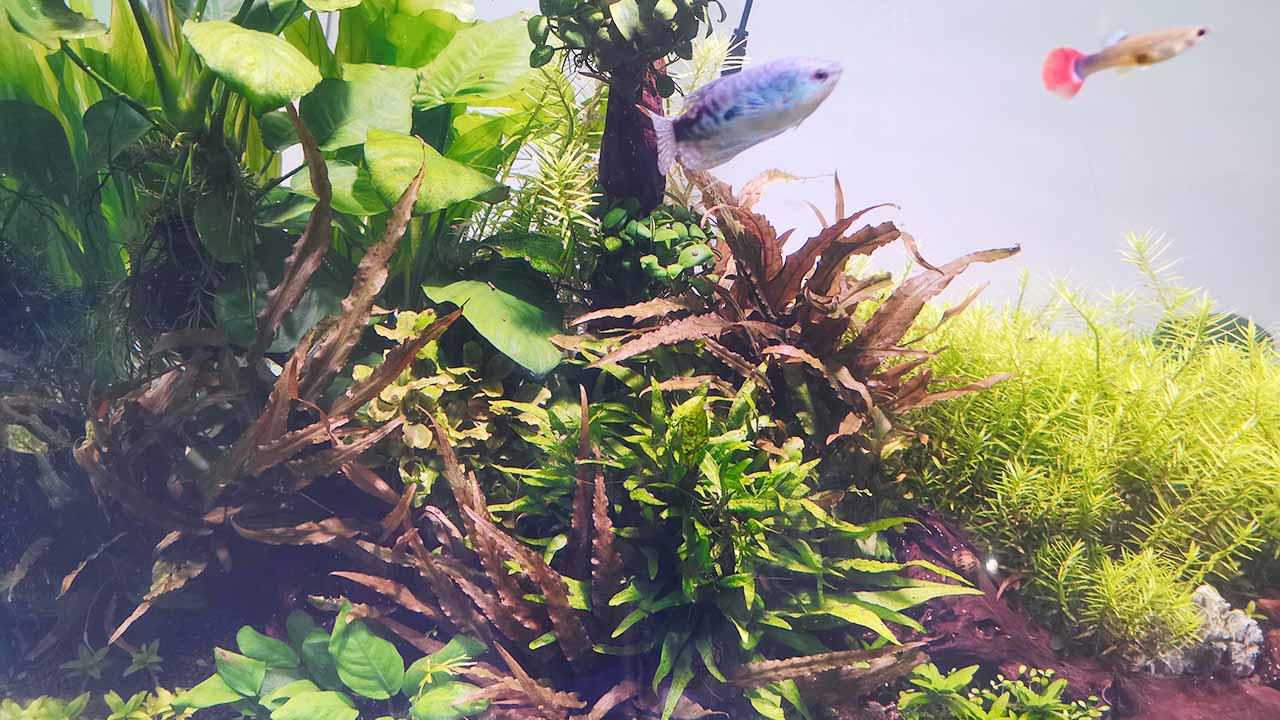
2. Substrate
- Function
The substrate provides a place for plants to root themselves and serves as a biological filter. The substrate houses beneficial bacteria that help to break down waste products and convert them into less harmful substances.
- Choosing the right substrate
The ideal substrate for aquascape tanks should be nutrient-rich and have a grain size that is appropriate for the plants you are keeping. Fine-grained substrates are good for root feeders, while coarse-grained substrates are better for stem plants.
- Replacing aquarium substrate
The aquarium substrate does not need to be replaced regularly. However, if you notice that the substrate is breaking down or becoming clogged with detritus, you may need to replace it.
3. Filter
- Function
The filter helps to remove waste products from the water, such as ammonia, nitrite, and nitrate. It also helps to keep the water clean and clear. There are three main types of aquarium filters: mechanical, biological, and chemical.
- Types of filters
- Mechanical filters: Mechanical filters remove debris from the water column. They typically consist of a filter media, such as a filter pad, that traps debris as water passes through it.
- Biological filters: Biological filters house beneficial bacteria that break down waste products from fish and other aquatic organisms. These bacteria convert ammonia into nitrite and then nitrate.
- Chemical filters: Chemical filters use chemical media to remove dissolved impurities from the water. Common chemical media include activated carbon and zeolite.
- Choosing a filter
The type of filter you choose will depend on the size of your tank and the type of fish you are keeping. A general rule of thumb is to choose a filter that is rated for a tank that is 2-3 times larger than your actual tank.
4. CO2 Injection
- Function
CO2 injection provides a supplementary source of carbon dioxide (CO2) for aquatic plants. CO2 is essential for plant growth and is used by plants during photosynthesis.
- Why it’s core
While not always essential, CO2 injection can benefit aquascapers who want to grow healthy, lush plants. It can help to promote faster plant growth, brighter colors, and a more overall aesthetic aquascape.
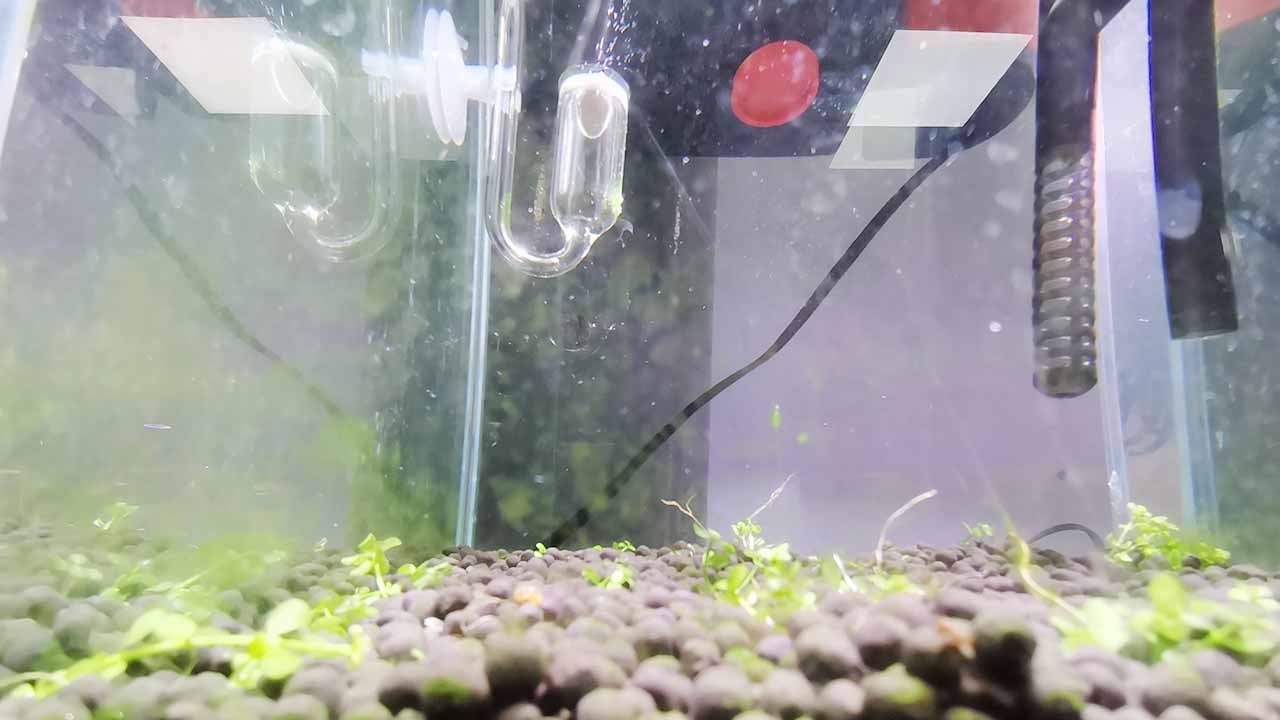
Core Aquascape Installation Guide
Lighting
1. Unpack & follow light fixture instructions.
2. Position light for full tank coverage.
3. Plug into the grounded outlet.
4. Setting the right lighting for the aquascaping, according to the plants’ needs.
Substrate (Aquarium Mud)
1. Briefly rinse aqua soil.
2. Choose a dry or water method for adding.
○Dry: Pour onto one side, creating a slope (optional).
○Water: Partially fill the tank, and sprinkle aqua soil over the surface.
3. Use a flat tool to level and achieve the desired slope.
Filter
1. Unpack & follow filter instructions.
2. Place media as directed.
3. Position the filter securely.
4. Plug into a grounded outlet (if applicable).
5. Make a clean schedule for the filter. For example, clean the canister filter in time.
CO2 Injection
1. Assemble components (consult instructions).
2. Calibrate for low CO2 levels, and monitor fish.
3. Gradually increase CO2 based on tank size & plants.
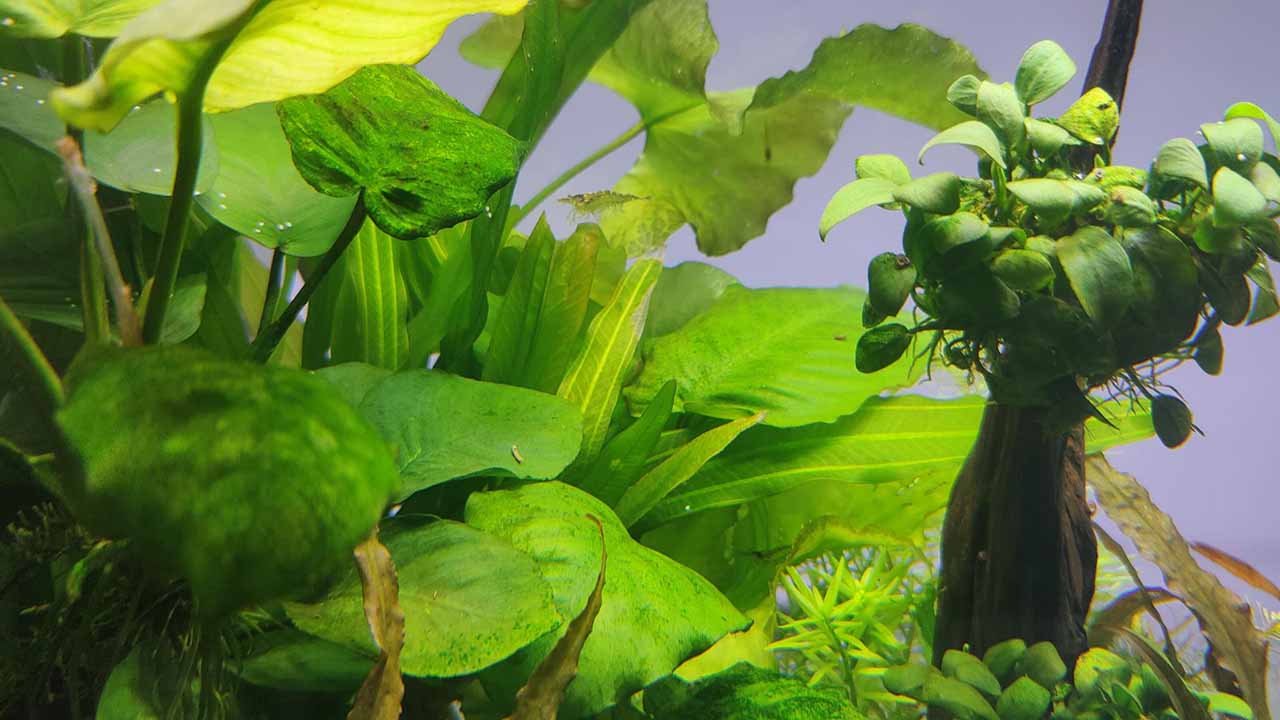
Do I need CO2 for Aquascape?
You don’t necessarily need CO2 injection for a successful aquascape, but it can be beneficial depending on the types of plants you choose. Here’s a breakdown:
CO2-Loving Plants:
These plants require a supplemental source of CO2 to thrive and display their vibrant colors. Examples include:
Stem plants: Many popular stem plants like Rotala rotundifolia and Hygrophila corymbosa.
Carpeting plants: Certain carpeting plants like Glossostigma elatinoides and Hemianthus callitrichoides.
Thrive without CO2
These plants can grow well in a low-tech setup without additional CO2 injection. They tend to be slower-growing and have less demanding light requirements. Examples include:
- Sword plants: Amazon swords (Echinodorus) and Anubias species.
- Java ferns: Java fern (Microsorum pteropus) varieties.
- Mosses: Java moss (Vesicularia dubyana) and Christmas moss (Vesicularia montagnei).
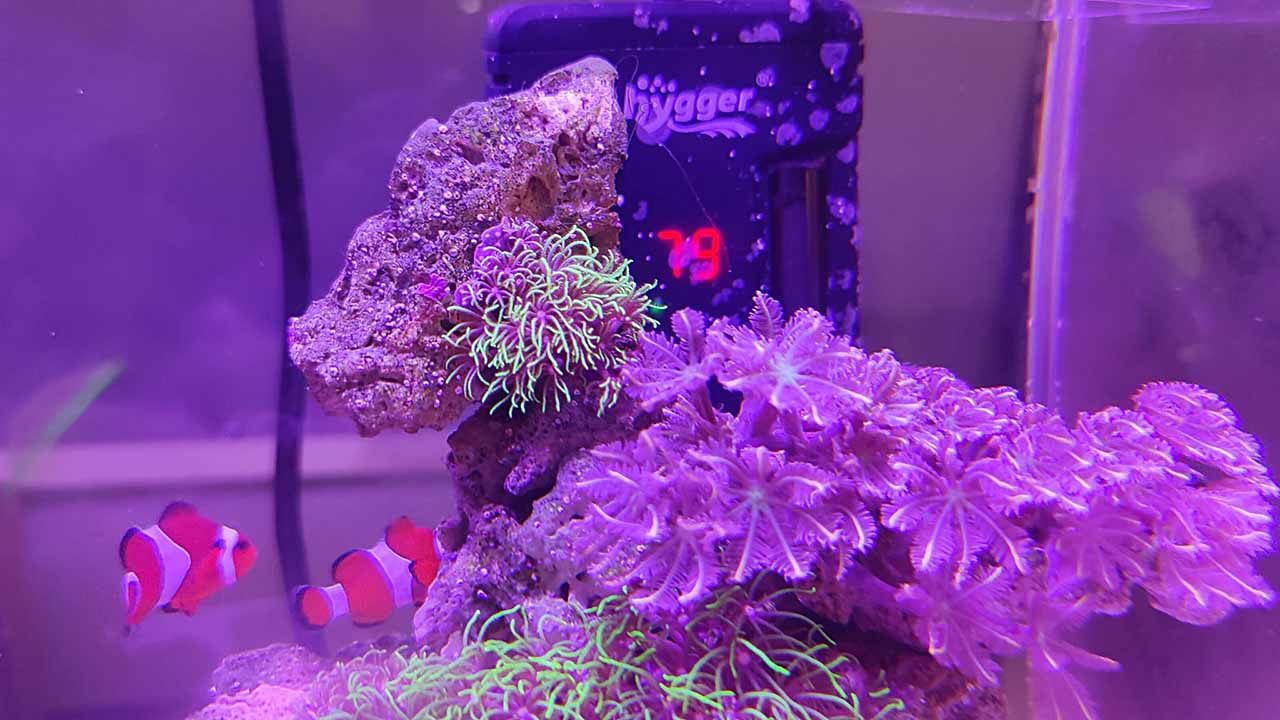
Use tips for the Aquascape Aquarium Equipment
1. Lighting
- Low-light plants: 0.5-1 watt per liter.
- High-light plants: 1–2 watts per liter.
- Full-spectrum lights for optimal plant growth.
2. Substrate
- Rinse aqua soil briefly before adding.
- Choose slope during setup for visual interest.
- Siphon during water changes to remove detritus buildup.
3. Filter
- Media placement: Follow filter instructions for biological, mechanical, and chemical media (optional).
- Regular cleaning: Maintain filter media for optimal performance.
- Monthly rinses with tank water to avoid disrupting beneficial bacteria.
4. CO2 Injection (Optional)
- Start low, and gradually increase based on tank size & plants.
- Monitor fish for signs of distress (rapid breathing, gasping).
- Use a drop checker to visually monitor CO2 levels.
5. Additional Tips
- Turn off the equipment before placing your hands in the tank.
- Cycle your tank for several weeks before adding fish.
- Research specific equipment for detailed instructions and care.
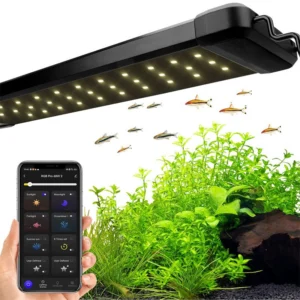
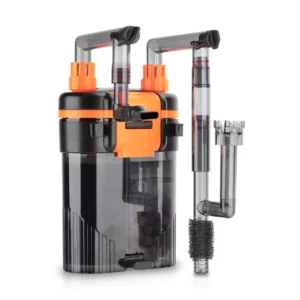
Leave a comment